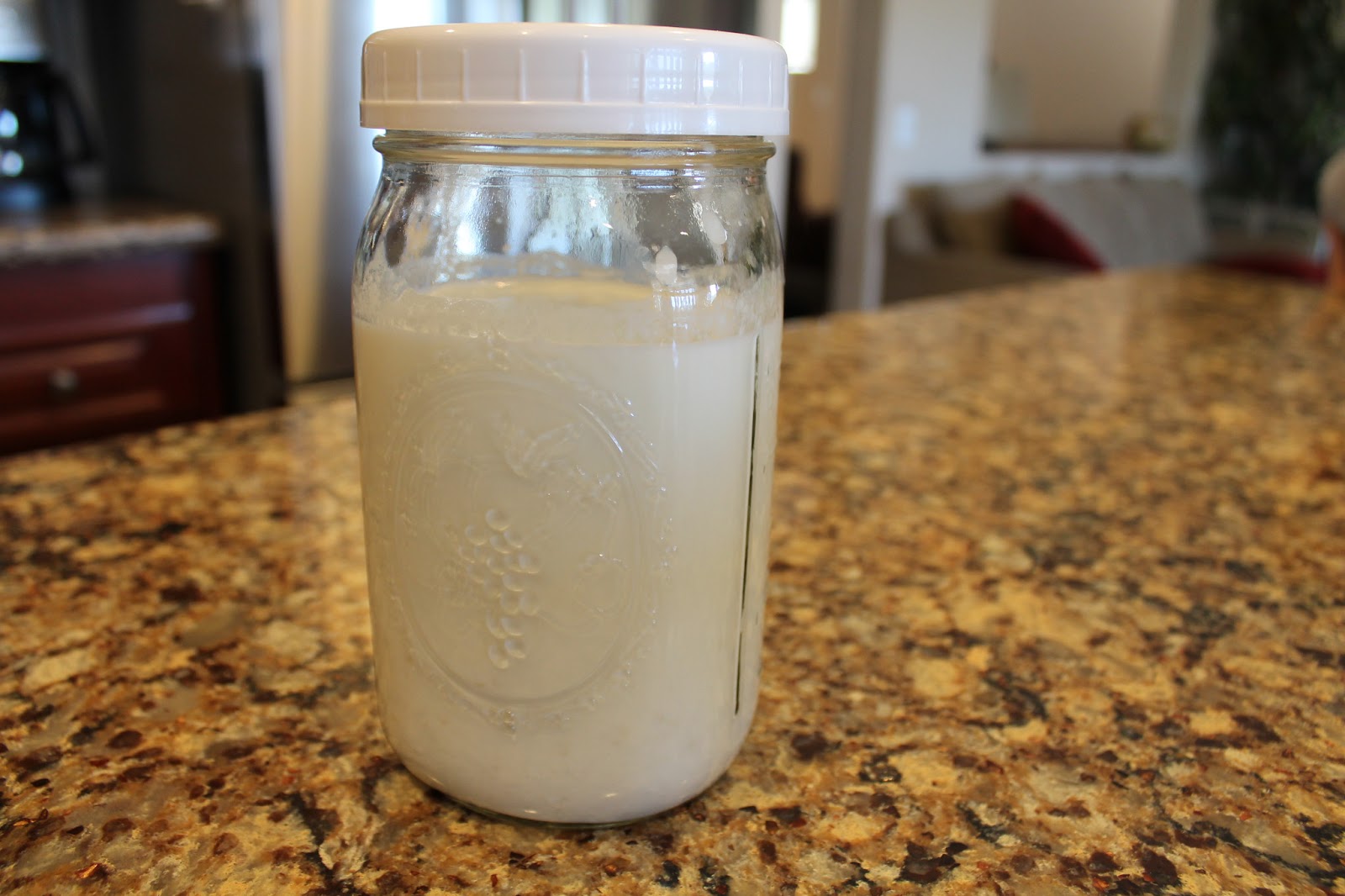- 1-2 Tbsp milk kefir grains
- 3-4 cup clean glass jar with lid
- Rubber, nylon or stainless steel mesh-type strainer and wooden spoon.
- Suitable container with wide open mouth for straining kefir into, and clean sealable bottle to store kefir.
- 2 cups fresh milk (raw unpasteurized or pasteurized whole milk, reduced-fat, non-fat milk. DO NOT USE ultra-pasteurized milk)
Method
 |
| Leave some room on top to allow for expansion. |
- Place fresh kefir grains in clean glass jar. We continue to brew our kefir with the excess grains but others recommend that you remove them.
- Add fresh milk, gently stir contents, place a lid on the jar and let stand at room temperature for 12-24 hours. Stir and taste it often. It should taste a little sour.
- Pour contents into a strainer and strain the kefir into a suitable container to separate the kefir grains from the liquid-kefir.
- Wash the fermenting jar and reuse the kefir grains for a new batch by repeating the whole process. I generally wash the jar once a week.
- What you've strained is kefir, also referred to as Liquid-Kefir. Store the liquid-kefir in a clean bottle and seal the bottle airtight.
"Kefir may be consumed right away, or better yet, store in a sealed bottle and refrigerate for a day or two and serve chilled. Another option is to ripen liquid-kefir at room temperature for a day or more, preferably under airlock. It can then be refrigerated for longer storage or served as you wish. 1 to 2 days storage in the fridge or ripened at room temperature improves flavor and increases nutritional value. Vitamins B6, B3 and B9 [folic acid] increase during storage, due to bio-synthesis of those vitamins mostly by yeasts of kefir grain organisms."
 |
| It's done! See the air pockets towards the bottom? |
For coconut milk kefir, use a can of coconut milk and 2-3 Tbsp of grains. Your grains do prefer animal milk. To keep your kefir going, you'll need to do one of the following:
- Refresh your grains in animal milk every 2-3 weeks. Rinsing in between with filtered water, never tap. OR
- Your grains will only last for about 3 months. Have a friend or neighbor provide new grains when yours die.
For more information visit http://users.sa.chariot.net.au/~dna/kefirpage.html
This is my favorite way to enjoy kefir, besides smoothies: http://www.culturedfoodlife.com/destination-kefir-breakfast-pudding/






